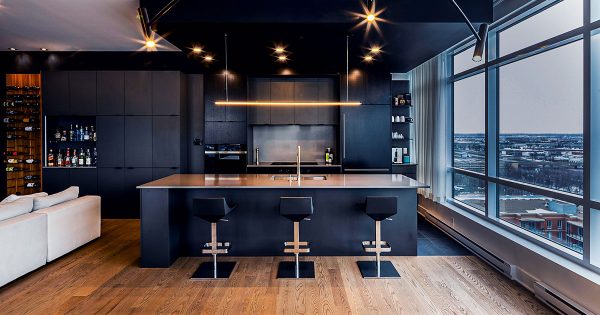GAGGENAU Appliances: Quiet Luxury for your Home
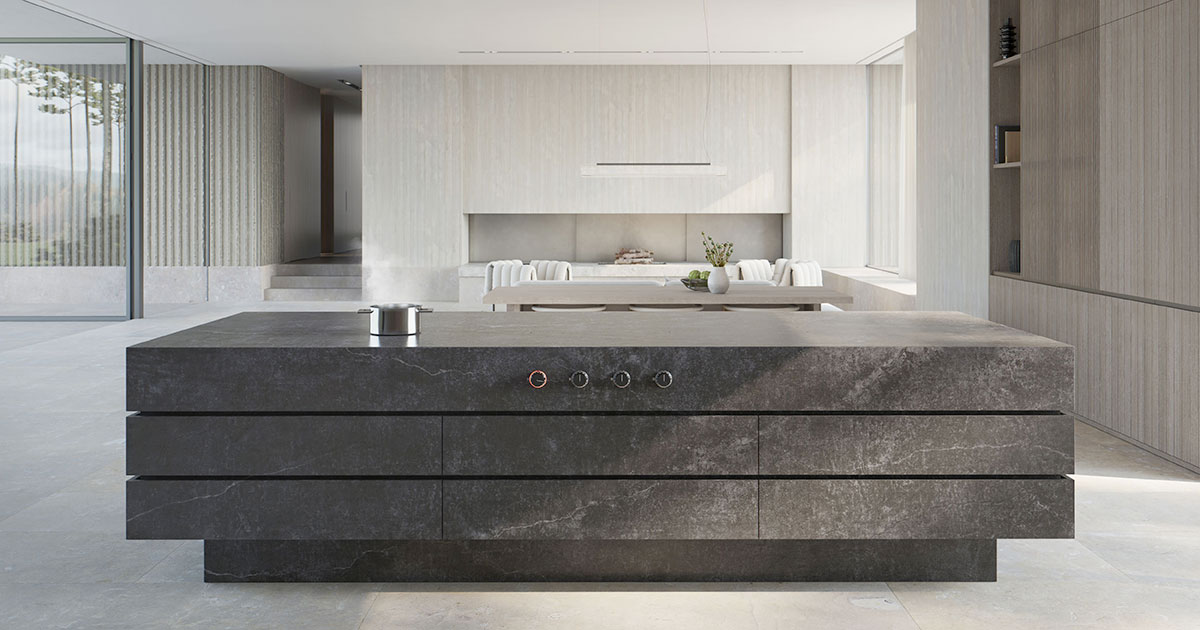
When we talk about ultimate refinement, as we do in the Gentologie Magazine Issue 12, the first thing that springs to my mind regarding home appliances is the German brand Gaggenau Appliances. Founded in 1683, the company is now a leader in quiet luxury in the home. With the help of Mr. Sven Baacke, Head of Design, and Mr. Mikkel Brandt Bugge, Industrial Designer at Gaggenau, you will discover the philosophy of this renowned company in the following pages.
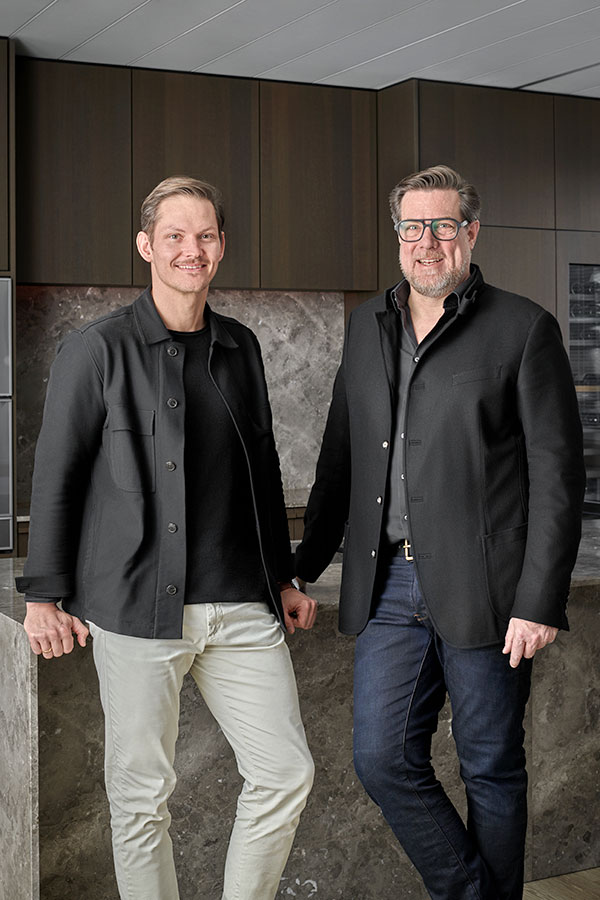
From left to right: Mikkel Brandt Bugge, industrial designer, and Sven Baacke, Head of design
Photo: Gaggenau
For me, the brand represents simplicity, luxury, timelessness, and, of course, refined design. So, I was curious to know if Mr. Baacke would like us to think of these words when we evoke the Gaggenau Appliances name. “Absolutely, simplicity, and also functionality. It is not only about beautiful things, aesthetics, and design, but also the perfect tool for cooking which is pretty hard to achieve. Some things are very factual, very engineering-driven, very machinelike, but Gaggenau is really a professional kitchen at home, positively creating it by being true to cooking principles, but also bringing enjoyment with that hidden way of luxury. You do not see much of the techniques at the forefront, and that is what it is all about,” he says.
What are the differences between the models on the European and North American markets?
“I think that in Europe, everything is a bit smaller, but to be honest, when I was in Montréal, it sometimes feels a little bit like Europe. It is not that we cannot do spacious appliances, but we know that the turkey must fit in it (laughs). Luxury, in a nutshell, is not only about the size, but the main focus on the appliances is different. Europe is more focused on the oven as the one statement, the first main appliance that people choose for the kitchen, whereas in the United States, maybe also in Canada, it is the refrigerator. Furthermore, Gaggenau has a finer design, more refined, more reduced, still spacious, of course, and more European luxury, more architectural luxury, light, and more behind that at the forefront, and that is what we aimed for the future,” says the Design Manager.
Gaggenau Appliances and the competition
What are the differentiating factors between Gaggenau and its competitors?
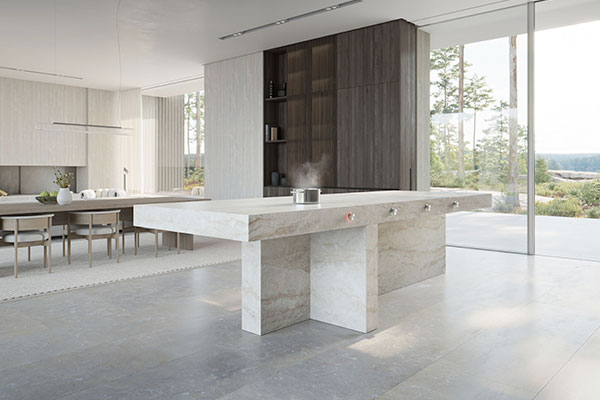
Essential Induction cooktop by Gaggenau
Photo : Gaggenau
Mr. Brandt Bugge, industrial designer for the company, explains that the German brand has a refined aesthetic that perfectly meets the needs of North American customers. What sets Gaggenau Appliances apart, in his view, is the brand’s slogan: The difference is Gaggenau. “It is something we follow by heart. What truly makes us different from the competition is the design experience that you get when interacting with and seeing our appliances. If you compare us with other manufacturers, you will see the effort that we put into the details and the experience from the first time you start controlling the appliances, and how well and intuitive it is to interact. You will also notice the functional aesthetics and analog execution with physical knobs and see how technical and precise they are. You will also notice the sounds and feeling of interacting with them, for example, how well the oven door closes, which is similar to a luxury car. We put a lot of effort into the sound, movement, and soft closing of these design elements. If you put all these interactions together, you will really notice that the experience you get from Gaggenau appliances is really different from others.”
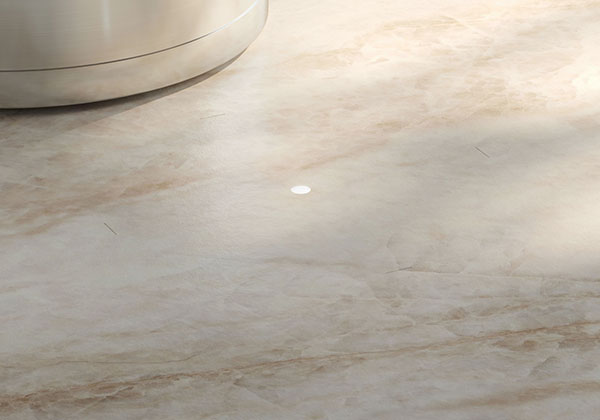
Close up on the Essential Induction cooktop by Gaggenau
Photo: Gaggenau
As you may have read in the introduction, Gaggenau Appliances has been around for over 340 years. So, I wanted to find out more about all those years of know-how, as well as their main challenges in the modern era. “What is important is that we started as a forge, processing, nails, and things like that more than 300 years ago. Interestingly, we are still working with steel and stainless steel, the main material for our home appliances, as its durability and aesthetics are pretty interesting. What I think evolves is that it is getting more and more invisible and also more permanent and can be placed in a very prominent wall and outstanding or hidden completely. Back in the day, they were wood stoves, and it was kind of derpy, but now it is getting nearly invisible, like with the new Essential Induction cooktop. It is magic, it is under the surface, it is not there anymore, literally gone, the power is still there, but you do not see anything. It is one of the main trends to make the design invisible,” says Mr. Baacke. He adds that he has a professional refrigerator at home, but it does not feel like a machine. Its design is more integrated, and it is a question of life more than physical appearance. “The traditional kitchen is adapting, evolving, becoming more like a living space for socializing. Having that said, the architects and interior designers working with us have a clear wish to see that prophecy applied since it is more respected in the kitchen environment and living space blending together.”
The evolution of the kitchen and the solution to the overabundance of screens in the home
And, is kitchen design and thinking evolving with these new possibilities?
“Our design philosophy is part of an overall project combining countertop and appliances. For example, you can hide a refrigerator behind a wall with an open-door assist, and that can be done with all appliances. Or the other way around, you can look into your wine cellar, install your oven like a picture on the wall. But you are right, it is all about integration! What we want to see is intelligence inside. Also, technology makes it possible to create something and integrate it. You can put something behind furniture, have special hinges, temperature control, and many more. You just have to remember that an oven can sometimes be pretty hot. One example is the Essential Induction cooktop, designed in partnership with Cosentino. It can give off a lot of heat, so we have to make sure it can operate safely in the home,” adds the veteran Head of Design at Gaggenau Appliances.
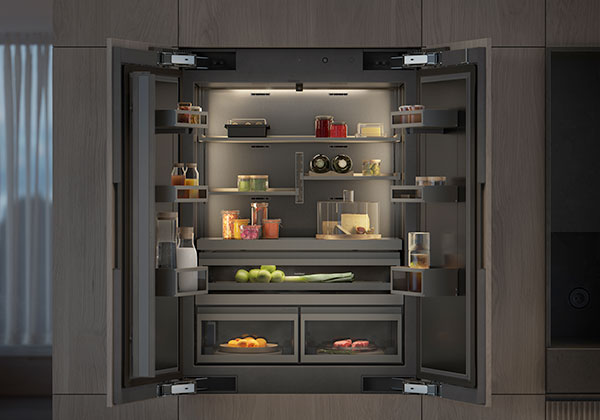
While many brands are developing a diversified service offering related to kitchens and smart homes, Gaggenau Appliances seems to be taking a completely different path. So I asked my guests about the German brand’s approach. “Technology is making it possible to speak to each other, and in real time. I come home, I don’t love having all the technology around me; I put away my phone, and it is time for cooking. Food is very nice, and you cannot have it in a digital way. With the oven, you take the knob, you turn it around, the heat is going on, it is a pretty direct way of interacting. My BMW motorbike from the ’70s, it is a state of the art, and it is still working. It is an older one, of course, it is not as comfortable as a new one, but I can still drive it. The essence of the quality of our products has always been related to the physical control of our appliances. I think this is something that our customers have high expectations and high value for—the physical contact with our materials,” says Baacke.
Mr. Brandt Bugge adds: “The price of the screen is decreasing, they just turn bigger and bigger. We see many competitors adding them, and we are questioning ourselves if the size of those screens really gives a great user experience in the end. In some cases yes, but for us, we want to be true to our heritage. We want to offer physical experiences, and then offer more reduced minimalist design experiences. We often talk about the seamless integration of technology. Indeed, our aim is to marry human interaction with our products by humanizing technology. Home Connect, for us, is there, under the surface. I want to touch the stainless steel, I am in control, I have the steering literally in my hand, and I still feel the excitement. But again, also technology makes it possible that seems so easy to operate, there is only the knob and that is it” add Mr. Baacke.
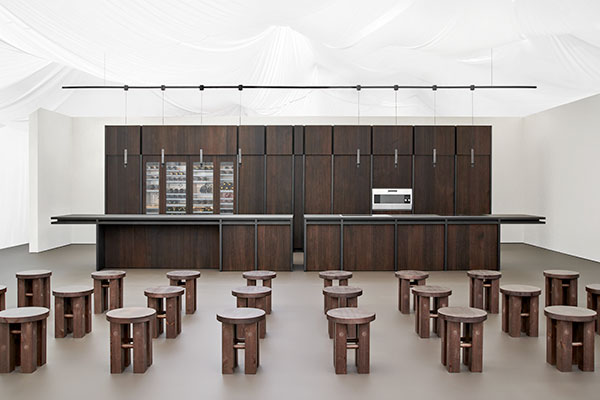
Elevation of gravity, a collaboration between Gaggenau and 1zu33 architects at Milan Design Week 2024
Photo: Gaggenau
Both men agree that luxury is not determined by the number of features an item offers. On the contrary, it is defined by the ability to interact with the product and derive flourishing experiences from it.
“For me, the future of luxury is offline. I like the idea of coming home, getting offline, enjoying cooking, and that is really a luxury when you are able to cook your meal by yourself, you bought all your things… that is the luxury. It was not like that back in the days; it was a necessity to cook all day, but now it is not necessary to cook because you have everything around 24 hours a day. But to sit there and take the time to prepare the food… this is luxury. Taking the time to choose the right wine, I can talk about this all day…” complements Mr. Baacke.
“We talk about the seamless integration of technology, and you mention all these experiences, but one of them is how we try to humanize technology in our appliances. That is why, you know, you mention screens, and as humans, we have human senses. If you have a screen with artificial light all day, it just makes sense to come home and have physical interaction, nothing that is causing visual noise to your eyes. I think this human interaction by humanizing technology is the best way to do that,” ends Mr. Brandt Bugge.
Whether on a personal or professional level, climate change is a daily concern. So, I took the opportunity to find out more about the brand as a whole and the team’s choices in terms of sustainable development. Mr. Baacke add: “Gas is great, but at the same time, you have the same power with an electric induction cooktop, and it is easier to clean it up. With gas, you cannot hide the flame mechanism even if there are minimalist appliances. The biggest challenge, mostly in the United States, is the ability to have the right amount of power for your cooktop to be as efficient as gas. If power comes from coal, then it is not sustainable, which will not be the case for the wind. Even here in Munich, it is a big challenge, even a bigger one for the next generations.” He also elaborates on the fact that Gaggenau products are designed with the long term in mind. Whether in terms of design, function, or performance, they will not have to be changed in five years’ time. Mr. Baacke still like the look of his kitchen worktop “It is classic and timeless, no update on it.” Gaggenau will still make appliances that will last. We need to look at sustainability and make products that will last for a long time by focusing on every part of the design and using the highest quality materials,” concludes Mr. Baacke.
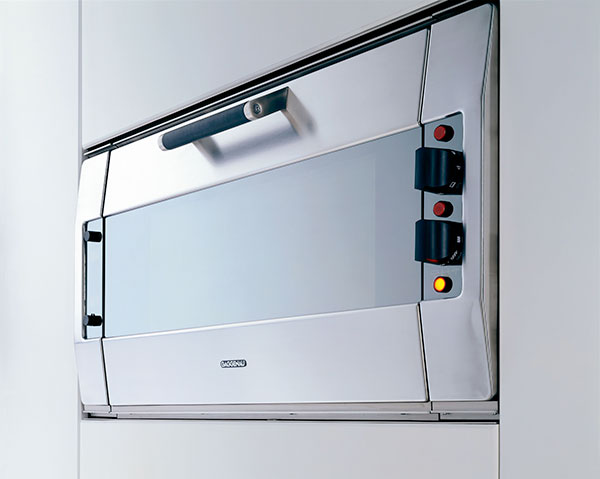
The EB 374 Oven (1986)
Photo: Gaggenau
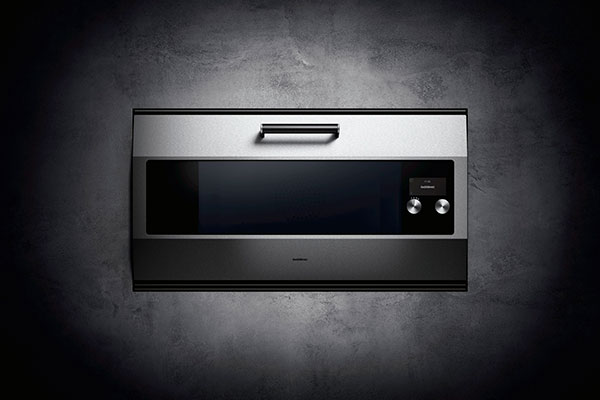
The EB 333 Oven (2024)
Photo: Gaggenau
“Adding to that, I like the EB (Version 333 in 2024), it is a 90-centimetre oven (36 inches), it is a very nice format, and you can still buy it, even if it was originally made in 1986 (Version 374). Our customers literally take their appliances to their new house and build their kitchen around it. That is not how it is happening in most of the kitchens today. How in love can you be with an appliance to do this? What have you done right as a designer if someone brings their oven or fridge to their new home? So, I think if you can achieve that, make really great products that last, which is not an easy task today because things are changing. That is what we can do from a sustainability perspective,” clarifies Mr. Baacke.
Why is Gaggenau Appliances the ultimate refinement in kitchen appliances?
For Sven Baacke, “It is really the symbiosis of aesthetics and functionality in your kitchen, and it is really an investment. After 10 years, I can look at my oven and say that is nice. Same thing for my motorcycle that I was telling you about earlier, I just can imagine what I can do, and I am still in love with them. If you are still in love after so many years, if you are experiencing something new, if you love the materials, it is getting old together with you… it is all about this investment that you really have.”
For Mikkel Brandt Bugge, “Our essence of well-balancing functions with aesthetics makes outstanding home appliances, but also the design that we offer stands out like almost iconic design pieces that give meaning to you and your home interior… and now ask yourself how many home appliances have that effect…”
This interview has been edited and condensed for clarity.
Visit the Gaggenau website by clicking this link
This article appeared in Gentologie magazine Issue 12. Subscribe to Le Club by Gentologie now.
Take a look at our article about Outdoor Kitchens, a Must for the Gentleman



